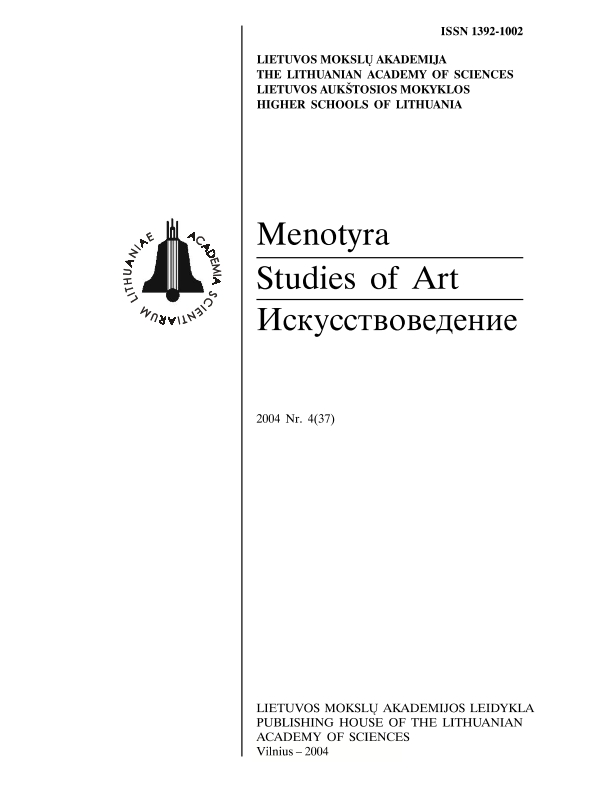Keletas teiginių ir pasvarstymų lietuvių scenografijos (1920-1940) modernėjimo klausimu
Some propositions and considerations on the issue of the process of modernization of Lithuanian scenography (1920-1940)
Author(s): Audronė GirdzijauskaitėSubject(s): Theatre, Dance, Performing Arts, Cultural history, Visual Arts, Interwar Period (1920 - 1939)
Published by: Lietuvos mokslų akademijos leidykla
Summary/Abstract: The peculiarities and directions of Lithuanian stage design were always influenced by two main factors: the state of the theatre during a specific period of time and the artistic processes. Professional Lithuanian theatre was established in the second decade of the 20th century, and in the first ten years of its existence it continued the traditions of the pre-reformist Russian theatre (all first-generation directors belonged to that school). In other words, it was a theatre of the author and actor, in which the artist usually played the secondary role of someone who decorated the stage. A large number of artists in the National Theatre (Vladas Didžiokas, Adomas Galdikas, Juozas Gregorauskas), with the exception of Vladimiras Dubeneckis, were painters from the Russian realistic school.During the transition between the third and fourth decades of the 20th century, with the arrival of Andrius Oleka-Žilinskas (and, later, Mikhail Chekhov) to work in Lithuania, the belated wave of the great theatre reforms together with ideas of artistic synthetism reaches our theatre. That was a set of repercussions of Russian and European (the Second Moscow Arts Theatre, directors Vakhtangov, Tairov, Reinhardt, painters Nivinsky, A. Ekster. F. Leger, and others) modernistic experiments that took place in the arts and theatre of the 20s. Being torn by contradictions, the modern theatre begins to form in Lithuania. The basic principles of this theatre are formed by the director.Theatre tries to rise to a higher level of generalized and conditional expressions and to recreate its own nature, the theatricality. Conceptual direction attempts to unify all artistic elements in a play. The artist is encouraged to organize the stage area (unique for each play) in a contemporary fashion, and becomes one of the most important partners of the director.Artists of the older generation (Mstislavas Dobužinskis and Adomas Galdikas) and younger artists who combined principles of the Lithuanian school with experience gained in foreign countries (artists S. Ušinskas, A. Gudaitis, L. Truikys; plays "The Chimes", "Šarūnas", "Twelfth Night", "Marco Millions", "Aukso žaismas" and so on) had largely influenced the creation of the theatre's new face and culture. In the works of these artists one can easily see elements of directions taken by European theatre, i.e. influences of symbolism, expressionism, cubism, and constructivism.The late-founded Lithuanian theatre flashed in the early 30s and rose to the level of modern European theatre. Shortly thereafter, however, the braver searches of avant-garde artists begin to fade away and theatre returns to its usual, later artificially imposed on as usual, tracks that are full of realism, or, at its best, psychological realism.
Journal: Menotyra
- Issue Year: 2004
- Issue No: 4(37)
- Page Range: 26-29
- Page Count: 4
- Language: Lithuanian

